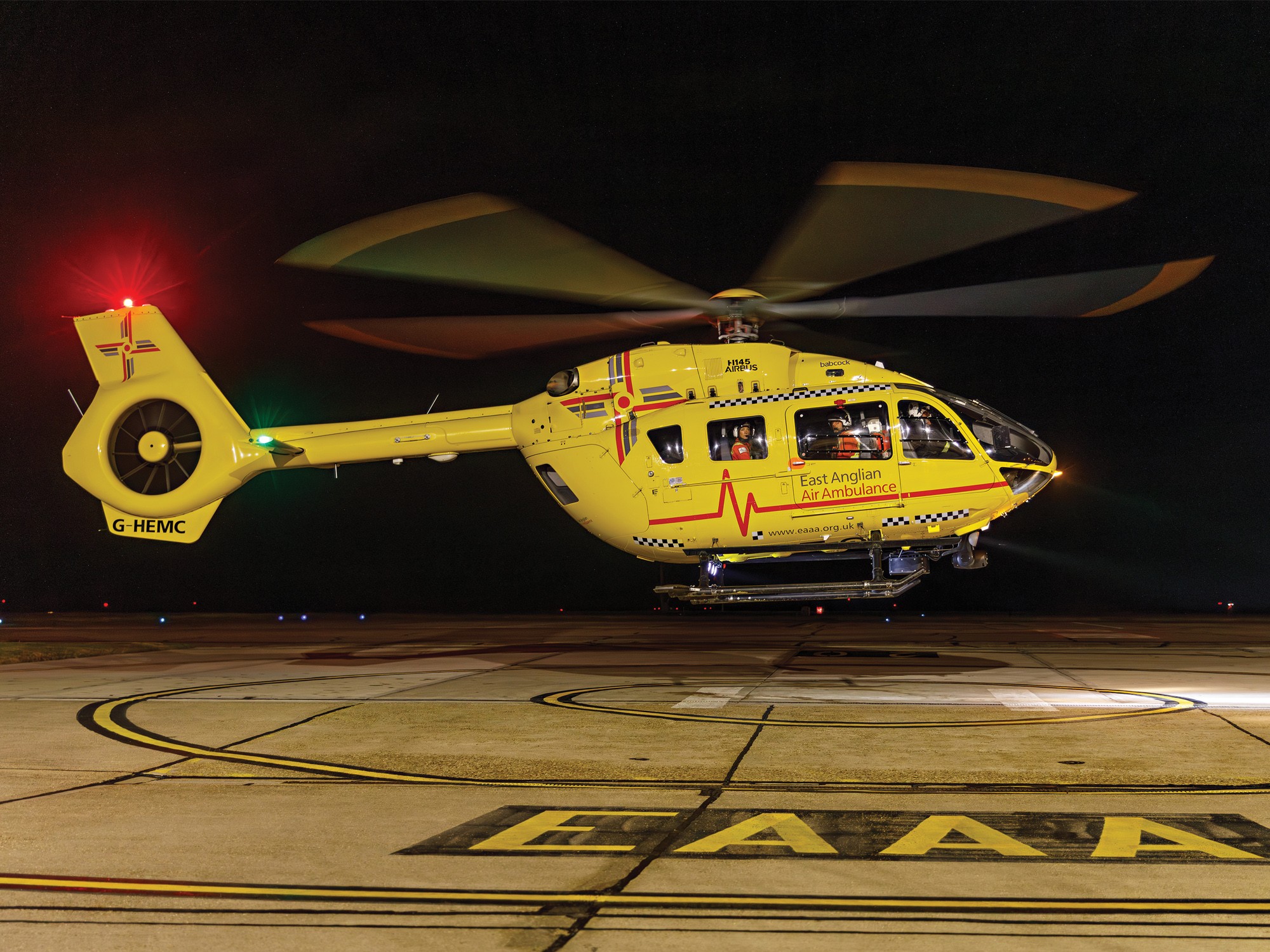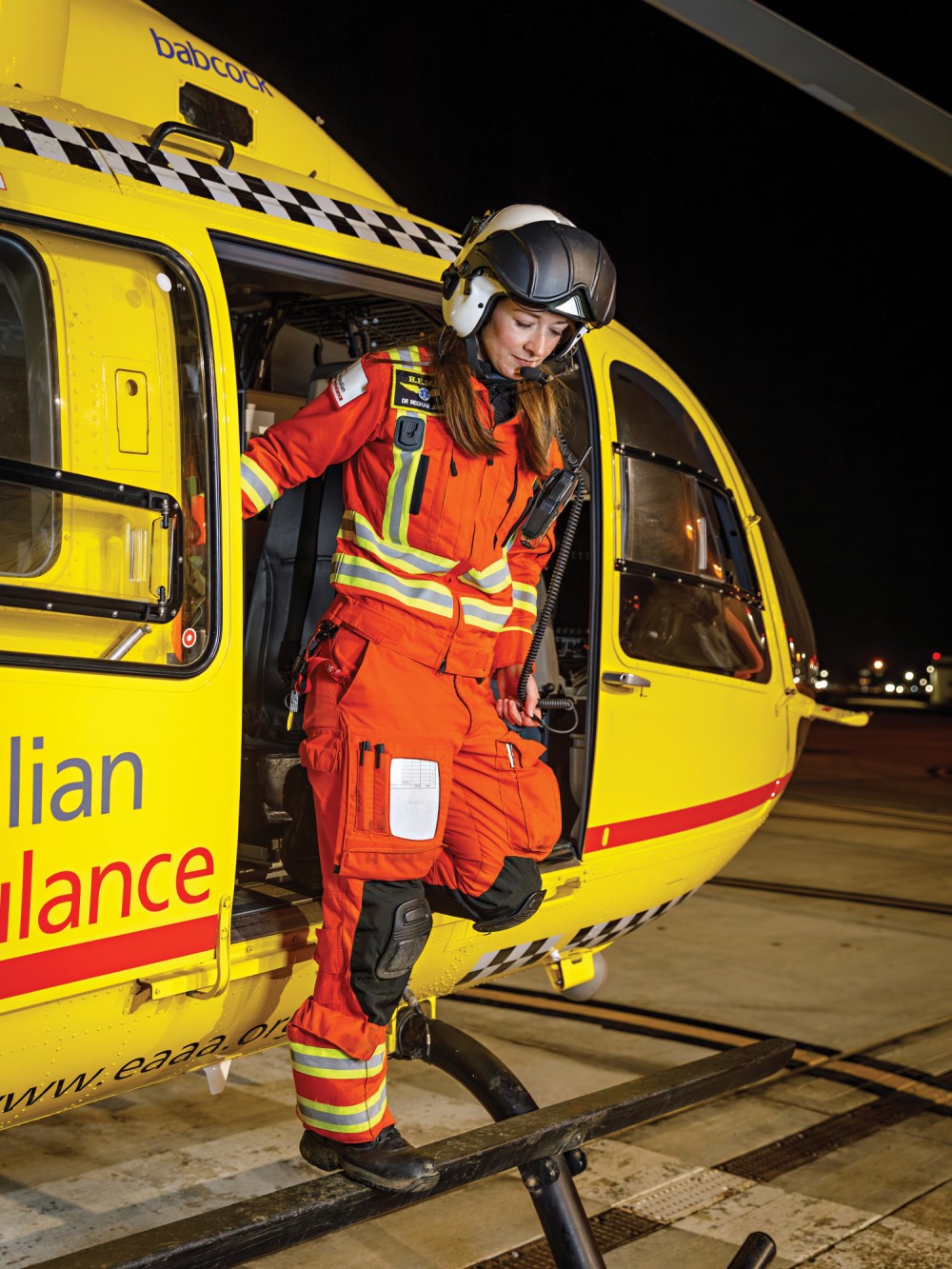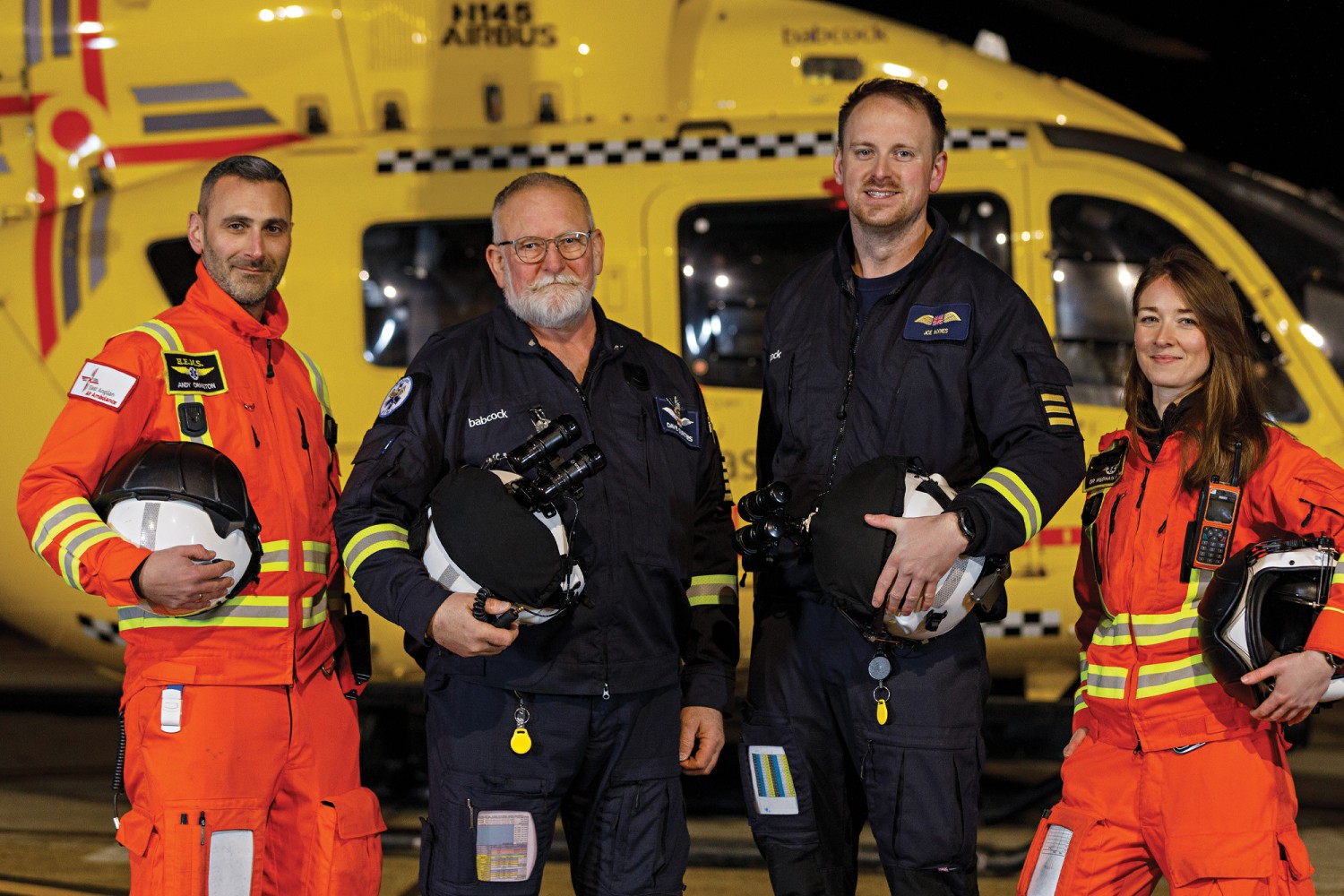
Soaring to save lives
A lifeline in the skies, the East Anglian Air Ambulance brings critical care to our communities when every minute matters
The hum of helicopter rotors cutting through Norfolk’s vast skies might blend into the background for many, but for Dr. Meghan of East Anglian Air Ambulance, it signals the start of another mission - where split-second decisions can mean the difference between life or death.
“We are a charity-based helicopter emergency medicine service offering advanced critical care 24 hours a day across Norfolk, Suffolk, Cambridgeshire and Bedfordshire,” explains Dr. Meghan, an anaesthetics specialist who joined the air ambulance team in 2024. “We attend jobs via helicopter or critical care car, usually aiding the most seriously injured or sickest people in the region.”
Operating from bases in Cambridge and Norwich, the service is tasked to an average of eight emergencies in a 24-hour period, often dealing with cardiac arrests and severe trauma cases, such as road traffic collisions.
A typical 12-hour shift begins with meticulous preparations. “We start with a handover from the previous team, who ensure we’re fully informed on any outstanding tasks,” Dr. Meghan explains. “We check our equipment, and the pilots brief us on weather conditions and flight restrictions for the day.”
Although Norfolk’s flat landscapes may seem ideal for helicopter landings, each task brings unique challenges. “Before we set off to attend an emergency, we have to examine maps to identify appropriate landing sites. We consider obstacles like power cables, livestock and even tidal conditions for beach landings,” Dr. Meghan says. “Sometimes it’s impossible to get close safely, in which case local police cars or ambulances transfer us to the scene.”
The air ambulance is often essential for saving lives in Norfolk’s rural communities. “We recently assisted a gentleman trapped in his vehicle after a collision in a remote area,” Dr. Meghan recalls. “The helicopter allowed us to deliver hospital-level care, including blood transfusions and anaesthesia at the roadside, which is not possible with regular ambulance services. We quickly transported him to a specialist centre, avoiding a long journey by road.”
Dr. Meghan admits that the job is often extremely mentally intense, involving challenging logistics and complex medical decision-making far from hospital facilities. “We try to mentally rehearse before arriving on the scene based on the limited information we receive,” Dr. Meghan explains. “We follow standard operating procedures to make decisions under pressure and rely heavily on our training. We’re a small team of two or three clinicians plus two pilots on each shift, but we collectively bring years of experience to each case.”
In West Norfolk, Ruth Baron experienced this incredible level of care first-hand when she suffered a cardiac arrest at home aged just 53. When the East Anglian Air Ambulance arrived, Ruth’s daughter Jennifer and her friend Summer had been performing CPR for 18 minutes. Ruth was quickly given enhanced care, which is provided by the air ambulance, with the team quickly anaesthetising her and placing her in a medically induced coma.
“When I heard a doctor and critical care paramedic from the air ambulance had been in the road ambulance with me, I knew I had received the best care possible,” Ruth says. After spending over three weeks unconscious in intensive care and two months in hospital, Ruth recovered, joining just 8% of people who survive an out-of-hospital cardiac arrest.
For Dr. Meghan, the emotional weight of daily life-and-death decisions is balanced by strong team relationships and essential debriefing practices. “We are a tight-knit unit and work closely with our team, talking through complex cases in weekly debrief sessions,” she says. “It’s also important to me to maintain a work-life balance. I love exercising and spending time in nature.”
The brave step from hospital medicine to the air ambulance is not a common career path, but it was an exciting challenge for Dr. Meghan. “I wanted to apply my medical training in a completely different environment,” she explains. “There’s something satisfying about taking those skills directly to patients before they reach the hospital, when early intervention can significantly improve outcomes.”
East Anglian Air Ambulance is almost entirely charity-funded, relying on the generosity of its community to continue saving lives. “The local community has been incredible. I recently ran the ‘Only the Brave’ obstacle race, and the turnout of supporters amazed me,” Dr. Meghan smiles. “I often see local businesses who have adopted us as their chosen charity and witness individuals making heartfelt donations. It’s fantastic.”
“To people who donate £5, £10, or whatever they can afford, all I can say is thank you,” adds Ruth. “Your support saves lives, and I’m so grateful the air ambulance was there for me.”
There are many ways to support the East Anglian Air Ambulance, from donations and playing the weekly lottery, to volunteering, participating in events or leaving a gift in your Will. To find out more visit: www.eaaa.org.uk


